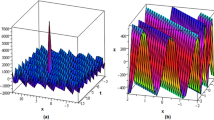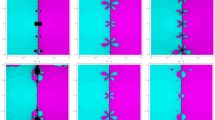Abstract
This research presents a novel and stable approach for reducing the order of fractional-order systems using the advantage of a balanced truncation method and gain adjustment factor. The method can be applied to both commensurate and non-commensurate fractional systems. First, the fractional-order system is turned into an integer-order system using the Oustaloup approximation for non-commensurate systems and a simple mathematical replacement for commensurate systems. Then, balanced truncation is used to create a lower-order model. A gain factor is added to the reduced model to improve its accuracy in the steady state without changing how it works in the dynamic condition. This proposed method differs from other balanced truncation-based reduction methods that enhance steady-state response by using time moments, Pade equations, and Routh tables. These extra steps are optional with this method. The proposed strategy makes the step and Bode responses of the reduced systems more like Oustaloup’s approximate higher-order model. The method’s effectiveness is evaluated using various performance metrics such as integral square error, root mean square error, and H∞ norm, as well as time response characteristics. Finally, inverse substitution converts the reduced integer-order model back to a commensurate fractional system. All simulations for the examples discussed in the study were conducted in MATLAB.







Similar content being viewed by others
Data Availability
Data sharing was not applicable to this article as no datasets were generated or analyzed during the current study.
References
A.B.H. Adamou-Mitiche, L. Mitiche, Multivariable systems model reduction based on the dominant modes and Genetic algorithm. IEEE Trans. Ind. Electron. 64(2), 1617–1619 (2017)
A.C. Antoulas, Approximation of large-scale dynamical systems (SIAM, Philadelphia, 2005)
Z. Bai, Krylov subspace techniques for reduced-order modeling of large-scale dynamical systems. Appl. Numer. Math. 43(1), 9–44 (2002)
S. Biradar, Y.V. Hote, S. Saxena, Reduced-order modeling of linear time-invariant systems using big bang big crunch optimization and time moment matching method. Appl. Math. Model. 40(15–16), 7225–7244 (2016). https://doi.org/10.1016/j.apm.2016.03.006
B. Bourouba, S. Ladaci, A. Chaabi, Reduced-order model approximation of fractional-order systems using differential evolution algorithm. J. Control Autom. Electr. Syst. 29(1), 32–43 (2018)
R. Caponetto, J.T. Machado, E. Murgano, M.G. Xibilia, Model order reduction: a comparison between integer and non-integer order systems approaches. Entropy 21(9), 876 (2019)
A. Charef, H.H. Sun, Y.Y. Tsao, B. Onaral, Fractal system as represented by singularity function. IEEE Trans. Autom. Control. 37(9), 1465–1470 (1992). https://doi.org/10.1109/9.159595
L. Chena, B. Basua, D. McCabe, Fractional order models for system identification of thermal dynamics of buildings. Energy Build 133, 381–388 (2016)
Y.Q. Chen, I. Petráš, D. Xue, Fractional order control—a tutorial, in Proceedings of ACC'09, American Control Conference (2009), pp. 1397–1411
P. Chen, C.H. Schwab, Model order reduction methods in computational uncertainty quantification, in Handbook of Uncertainty Quantification (Springer, 2017), pp. 936–990
J. Chen, A. Tepljakov, E. Petlenkov, Y.Q. Chen, B. Zhuang, Boundary Mittag–Leffler stabilization of coupled time fractional order reaction–advection–diffusion systems with non-constant coefficients. Syst. Control Lett. 149, 104875 (2021). https://doi.org/10.1016/j.sysconle.2021.104875
S. Desai, R. Prasad, A novel order diminution of LTI systems using big bang big crunch optimization and Routh approximation. Appl. Math. Model. 37, 8016–8028 (2013). https://doi.org/10.1016/j.apm.2013.02.052
B.B. Duddeti, Multivariable system reduction using stability equation method and SRAM. World Acad. Sci. Eng. Technol. Int. J. Math. Comput. Sci. 11(6), 242–246 (2017)
B.B. Duddeti, Order reduction of large-scale linear dynamic systems using balanced truncation with modified Cauer continued fraction. IETE J. Educ (2023). https://doi.org/10.1080/09747338.2023.2178530
B.B. Duddeti, A.K. Naskar, K.R. Subhashini, Order reduction of LTI systems using balanced truncation and particle swarm optimization algorithm. Circuits Syst. Signal Process. (2023). https://doi.org/10.1007/s00034-023-02304-7
L. Fortuna, G. Nunnari, A. Gallo, Model Order Reduction Techniques with Applications in Electrical Engineering (Springer, Berlin, 2012)
S. Ganguli, G. Kaur, P. Sarkar, Global heuristic methods for reduced order modelling of fractional order systems in the delta domain: a unified approach. Ric. Mat. (2021). https://doi.org/10.1007/s11587-021-00644-7
Z. Gao, Stable model order reduction method for fractional-order systems based on unsymmetric Lanczos algorithm. IEEE/CAA J. Autom. Sin. 6(2), 485–492 (2019)
S. Gugercin, A. Antoulas, A survey of model reduction by balanced truncation and some new results. Int. J. Control. 77(8), 748–766 (2004)
R.K. Gautam, N. Singh, N.K. Choudhary, A. Narain, Model order reduction using factor division algorithm and fuzzy c-means clustering technique. Trans. Inst. Meas. Control. 41(2), 468–475 (2019)
C. Huang, K. Zhang, X. Dai, W. Tang, A modified balanced truncation method and its application to model reduction of power system, in Proceedings of the 2013 IEEE Power and Energy Society General Meeting (Vancouver, 21–25 July. IEEE, New York, 2013), pp. 1–5
S. Jain, Y.V. Hote, Order diminution of LTI systems using modified big bang big crunch algorithm and Pade approximation with fractional order controller design. Int. J. Control Autom. Syst. 19(4), 2105–2121 (2021)
S. Jain, Y.V. Hote, Reduced order approximation of incommensurate fractional order systems, in 2019 IEEE Conference on Control Technology and Applications (CCTA) (2019), pp. 1056–1061
S. Jain, Y.V. Hote, S. Saxena, Model order reduction of commensurate fractional-order systems using a big bang–big crunch algorithm. IETE Tech. Rev. 37(5), 453–464 (2020)
Y.L. Jiang, Z.H. Xiao, Arnoldi-based model reduction for fractional order linear systems. Int. J. Syst. Sci. 46(8), 1411–1420 (2015)
M. Juneja, S.K. Nagar, S.R. Mohanty, PSO Based reduced order modelling of autonomous AC microgrid considering state perturbation. J. Control Meas. Electron. Comput. Commun. 61(1), 66–78 (2020). https://doi.org/10.1080/00051144.2019.1682867
S. Kamal, R.K. Sharma, T.N. Dinh, B. Bandyopadhyay, Sliding mode control of uncertain fractional-order systems: a reaching phase free approach. Asian J. Control (2019). https://doi.org/10.1002/asjc.2223
M. Khanra, J. Pal, K. Biswas, Reduced order approximation of MIMO fractional order systems. IEEE J. Emerg. Sel. Top. Circuits Syst. 3(3), 451–458 (2013)
W. Krajewski, U. Viaro, A method for the integer-order approximation of fractional-order systems. J. Franklin Inst. 351(1), 555–564 (2014)
C.A. Monje, Y.Q. Chen, B.M. Vinagre, D. Xue, V. Feliu, Fractional-order Systems and Controls: Fundamentals and Applications, series. Advances in Industrial Control (Springer, 2010)
B.C. Moore, Principal component analysis in linear systems: controllability, observability, and model reduction. IEEE Trans. Autom. Control. 26(1), 17–32 (1981)
A. Mouhou, A. Badri, Low integer-order approximation of fractional-order systems using grey wolf optimizer-based cuckoo search algorithm. Circuits Syst. Signal Process. 41, 1869–1894 (2002)
A. Oustaloup, F. Levron, B. Mathieu, F.M. Nanot, Frequency-band complex non-integer differentiator: characterization and synthesis. IEEE Trans. Circuits Syst. I Fundam. Theory Appl. 47(1), 25–39 (2000)
I. Podlubny, Fractional Differential Equations (Academic Press, Orlando, 1999)
A.K. Prajapati, R. Prasad, Model order reduction by using the balanced truncation and factor division methods. IETE J. Res. 65(6), 827–842 (2018)
A.K. Prajapati, R. Prasad, Order reduction in linear dynamical systems by using improved balanced realization technique. Circuits Syst. Signal Process. 38, 5289–5303 (2019). https://doi.org/10.1007/s00034-019-01109-x
A.K. Prajapati, R. Prasad, Model reduction using the balanced truncation method and the Pade’ approximation method. IETE Tech. Rev. 39(2), 257–269 (2022). https://doi.org/10.1080/02564602.2020.1842257
A.K. Prajapati, S. Mamidala, S. Ravada, C. Mutta, System reduction using continued fraction method to allow retention of dominant modes, in 13th Asian Control Conference (ASCC), pp. 203–208. https://doi.org/10.23919/ASCC56756.2022.9828075
A.K. Prajapati, R. Prasad, Reduced-order modelling of LTI systems by using Routh approximation and factor division methods. Circuits Syst. Signal Process. 38, 3340–3355 (2019)
A.K. Prajapati, R. Prasad, A new model reduction technique for the design of controller by using moment matching algorithm. IETE. Tech. Rev. 39(6), 1419–1440 (2022)
M. Rachid, B. Maamar, D. Said, Comparison between two approximation methods of state space fractional systems. Signal Process. 91(3), 461–469 (2011)
M. Rydel, R. Stanisławski, K.J. Latawiec, M. Gałek, Model order reduction of commensurate linear discrete-time fractional-order systems. IFAC-Papers on Line 51(1), 536–541 (2018)
M.G. Safonov, R.Y. Chiang, D.J.N. Limebeer, Optimal Hankel model reduction for non-minimal systems. IEEE Trans. Autom. Control 35(4), 496–502 (1990)
P. Sarkar, R.R. Shekh, A. Iqbal, A unified approach for reduced order modeling of fractional order system in delta domain, in International Automatic Control Conference (CACS) (2016), pp. 257–262
S. Saxena, Y.V. Hote, P.P. Arya, Reduced-order modeling of commensurate fractional-order systems, in 14th International Conference on Control, Automation, Robotics and Vision (ICARCV) (2016), pp. 1–6
A.H. Shirde, J.M. Boling, H.T. Toivonen, Output error identification in the presence of structural disturbances, in 18th International Conference on Control, Automation and Systems (ICCAS 2018) (2018)
D.K. Sambariya, G. Arvind, High order diminution of LTI system using stability equation method. Br. J. Math. Comput. Sci. 13(5), 1–15 (2016)
J. Singh, C.B. Vishwakarma, K. Chattterjee, Biased reduction method by combining improved modified pole clustering and improved Pade approximations. Appl. Math. Model. 40, 1418–1426 (2016)
T. Soll, R. Pulch, Sample selection based on sensitivity analysis in parameterized model order reduction. J. Comput. Appl. Math. 316, 271–286 (2017)
H.N. Soloklo, N. Bigdeli, Direct approximation of fractional order systems as a reduced integer/fractional-order model by genetic algorithm. Sadhana 45, 277 (2020)
R. Stanisławski, M. Rydel, K.J. Latawiec, Modeling of discrete-time fractional-order state space systems using the balanced truncation method. J. Franklin Inst. 354(7), 3008–3020 (2017)
R. Stanisławski, M. Rydel, Z. Li, A new reduced-order implementation of discrete-time fractional-order PID controller. IEEE Access 10, 17417–17429 (2022). https://doi.org/10.1109/ACCESS.2022.3150883
V. Stojanovic, V. Filipovic, Adaptive input design for identification of output error model with constrained output. Circuits Syst. Signal Process. 33, 97–113 (2014). https://doi.org/10.1007/s00034-013-9633-0
V. Stojanovic, N. Nedic, D. Prsic, L. Dubonjic, Optimal experiment design for identification of ARX models with constrained output in non-Gaussian noise. Appl. Math. Model. 40, 6676–6689 (2016)
V. Sreeram, P. Agathoklis, Model reduction using balanced realizations with improved low frequency behaviour. Syst. Control Lett. 12, 33–38 (1989)
S.K. Suman, A. Kumar, Linear system of order reduction using a modified balanced truncation method. Circuits Syst. Signal Process. 40, 2741–2762 (2021). https://doi.org/10.1007/s00034-020-01596-3
M. Tavakoli-Kakhki, M. Haeri, Model reduction in commensurate fractional-order linear systems. Proc. Inst. Mech. Eng. Part I J. Syst. Control Eng. 223(4), 493–505 (2009)
A. Tepljakov, Fractional-Order Modelling and Control of Dynamic Systems (Springer, Switzerland, 2017)
A. Tepljakov, P. Eduard, J. Belikov, FOMCON: a MATLAB toolbox for fractional-order system identification and control. Int. J. Microelectron. Comput. Sci. 2(2), 51–62 (2011)
M. Zheng, P. Li, Q. Liu, H. Lin, Design of PIλ-PDμ controller for high-order systems based on model order reduction using BB-BC and time moment matching. Trans. Inst. Meas. Control. (2023). https://doi.org/10.1177/01423312221127742
C.J. Zuñiga Aguilar, J.F. Gómez-Aguilar, V.M. Alvarado-Martínez, H.M. Romero-Ugaldec, Fractional order neural networks for system identification. Chaos Solitons Fractals 130, 109444 (2020)
Author information
Authors and Affiliations
Corresponding author
Ethics declarations
Conflict of interest
No potential conflict of interest was reported by the author.
Additional information
Publisher's Note
Springer Nature remains neutral with regard to jurisdictional claims in published maps and institutional affiliations.
Rights and permissions
Springer Nature or its licensor (e.g. a society or other partner) holds exclusive rights to this article under a publishing agreement with the author(s) or other rightsholder(s); author self-archiving of the accepted manuscript version of this article is solely governed by the terms of such publishing agreement and applicable law.
About this article
Cite this article
Duddeti, B.B. Approximation of Fractional-Order Systems Using Balanced Truncation with Assured Steady-State Gain. Circuits Syst Signal Process 42, 5893–5923 (2023). https://doi.org/10.1007/s00034-023-02393-4
Received:
Revised:
Accepted:
Published:
Issue Date:
DOI: https://doi.org/10.1007/s00034-023-02393-4




